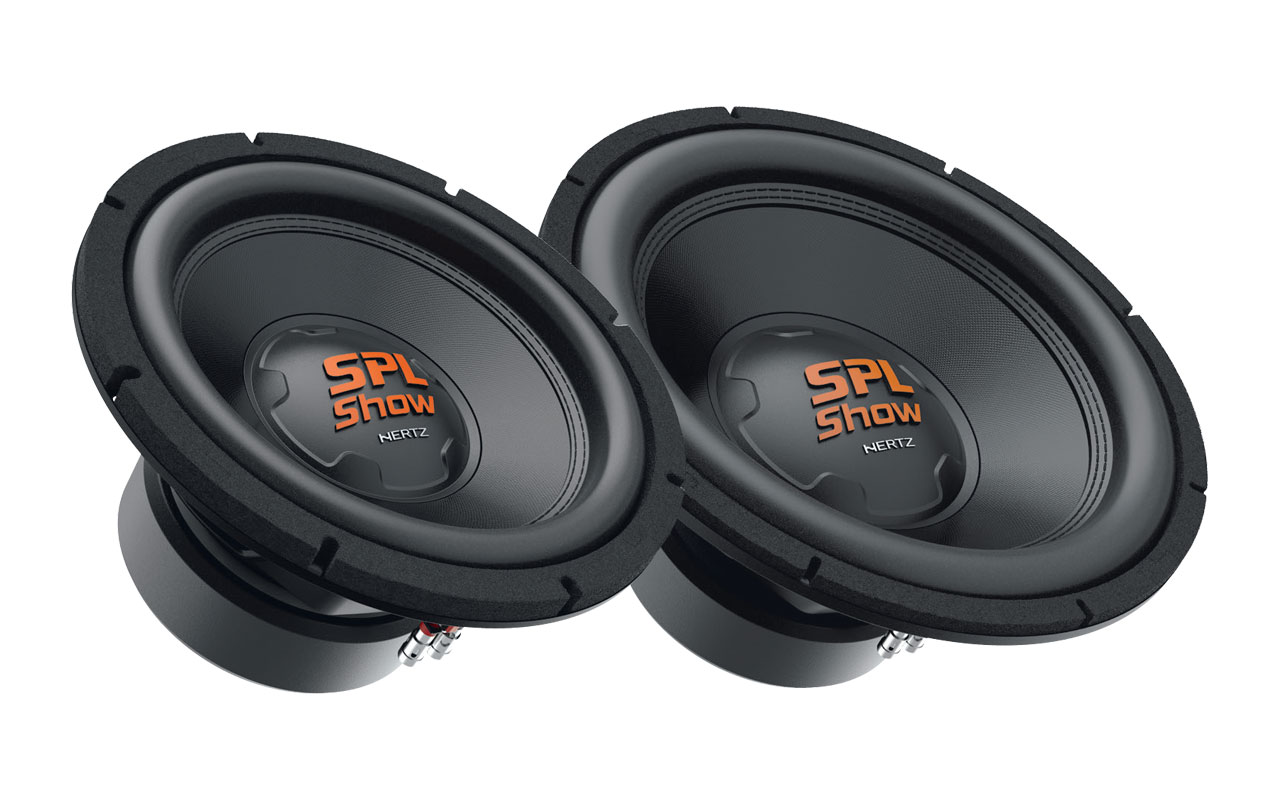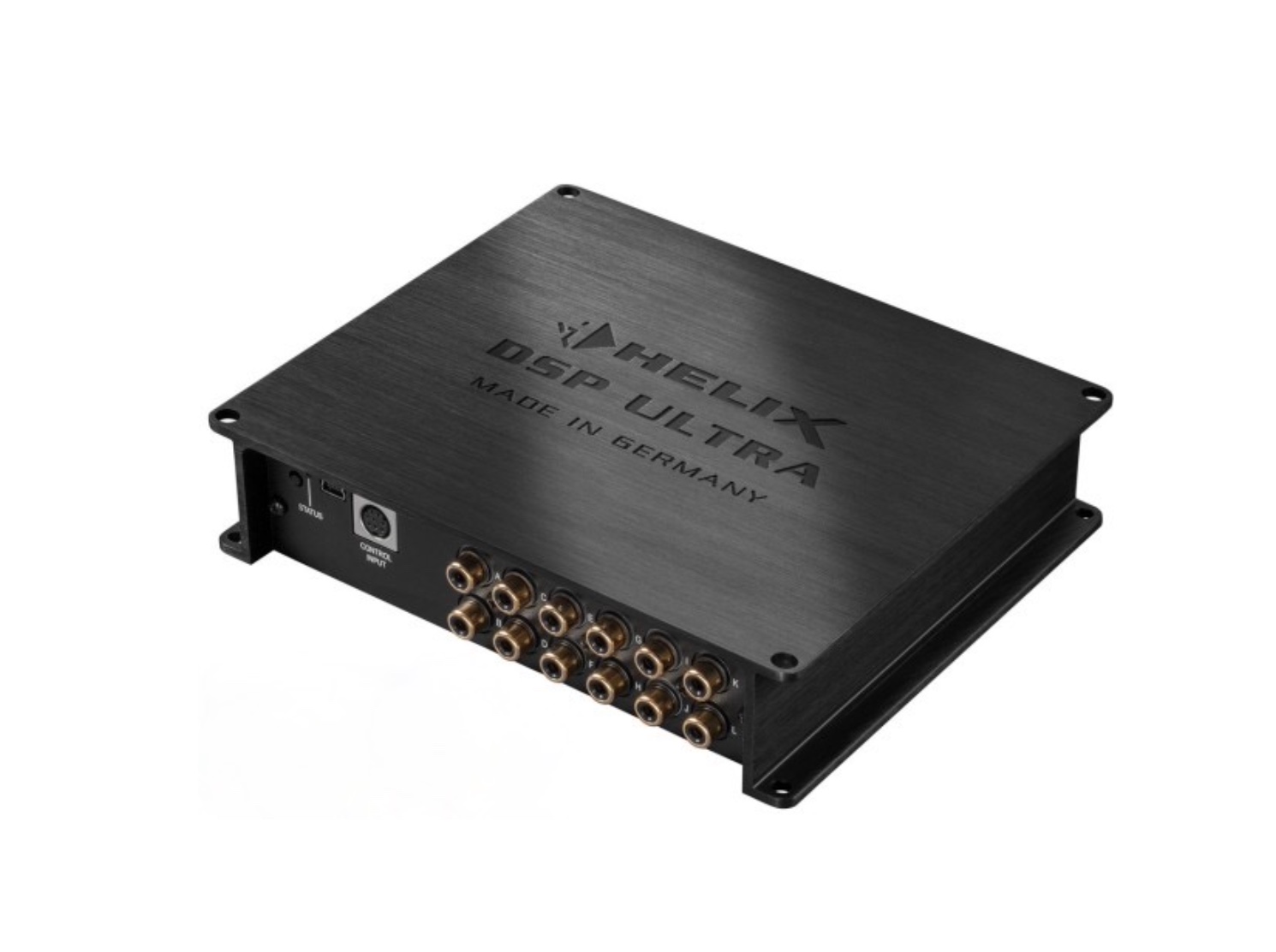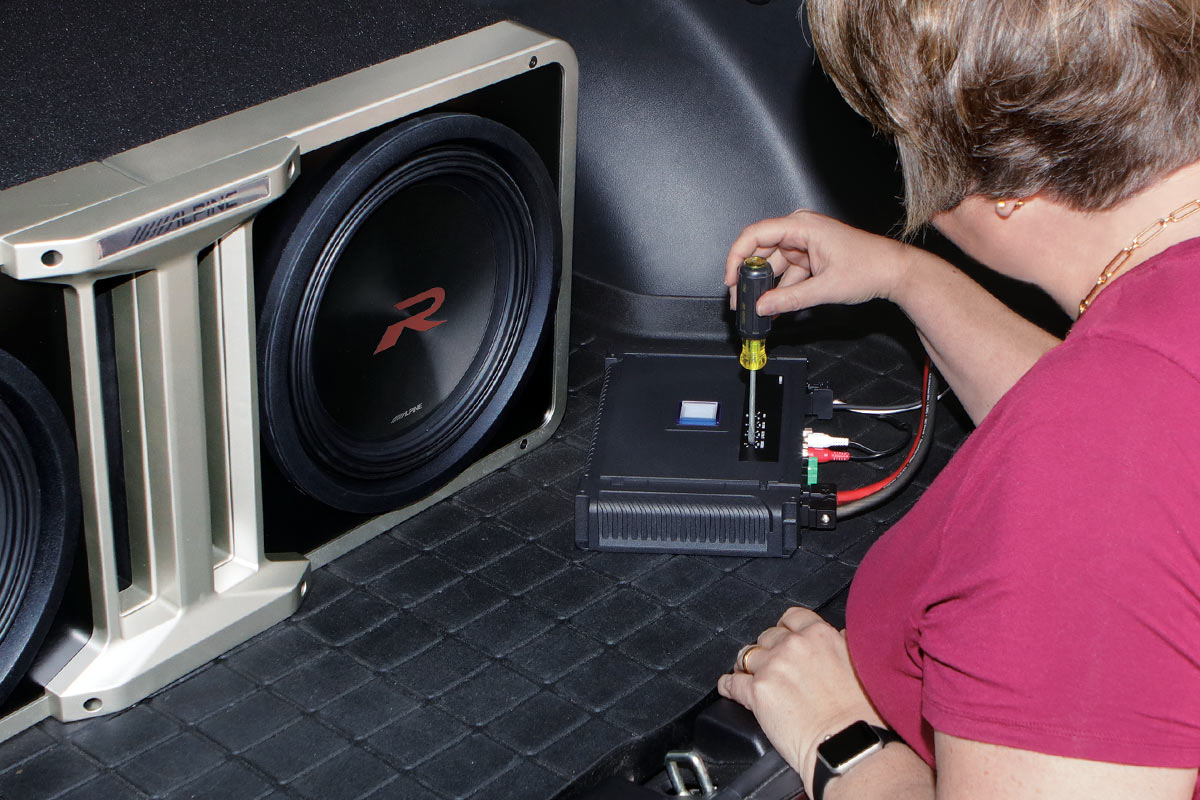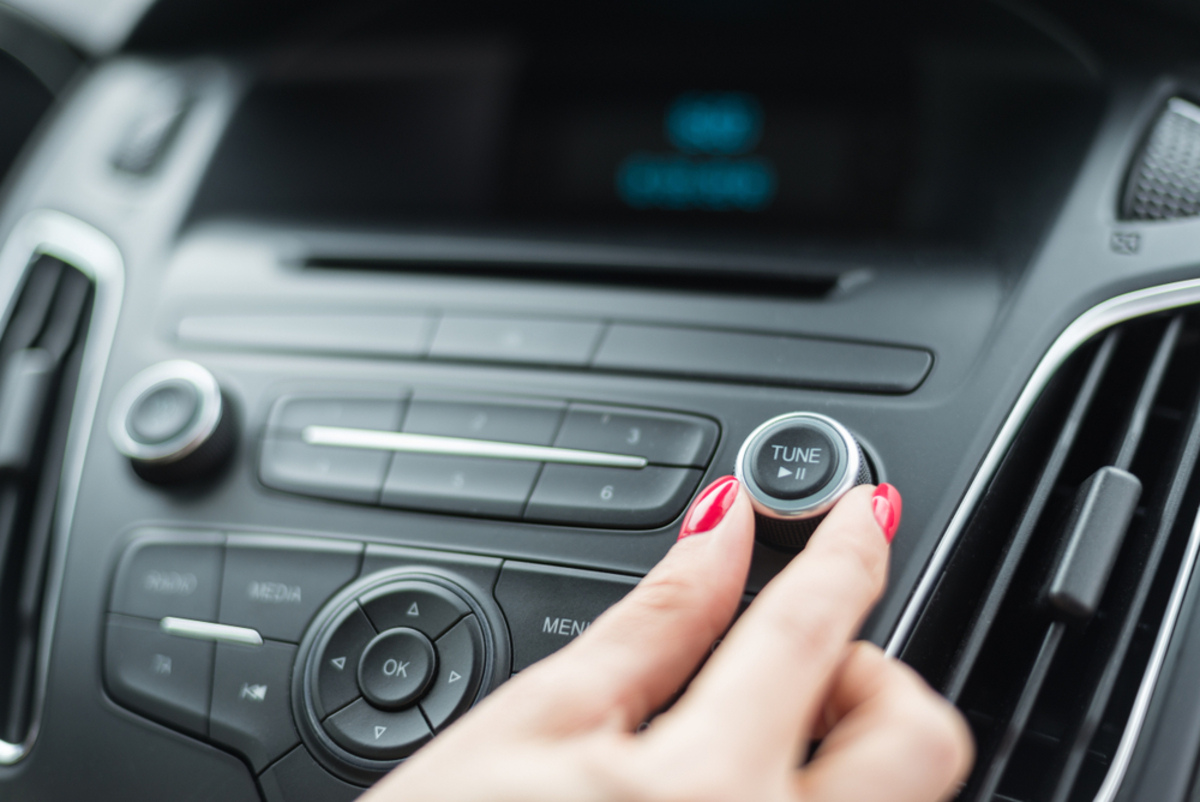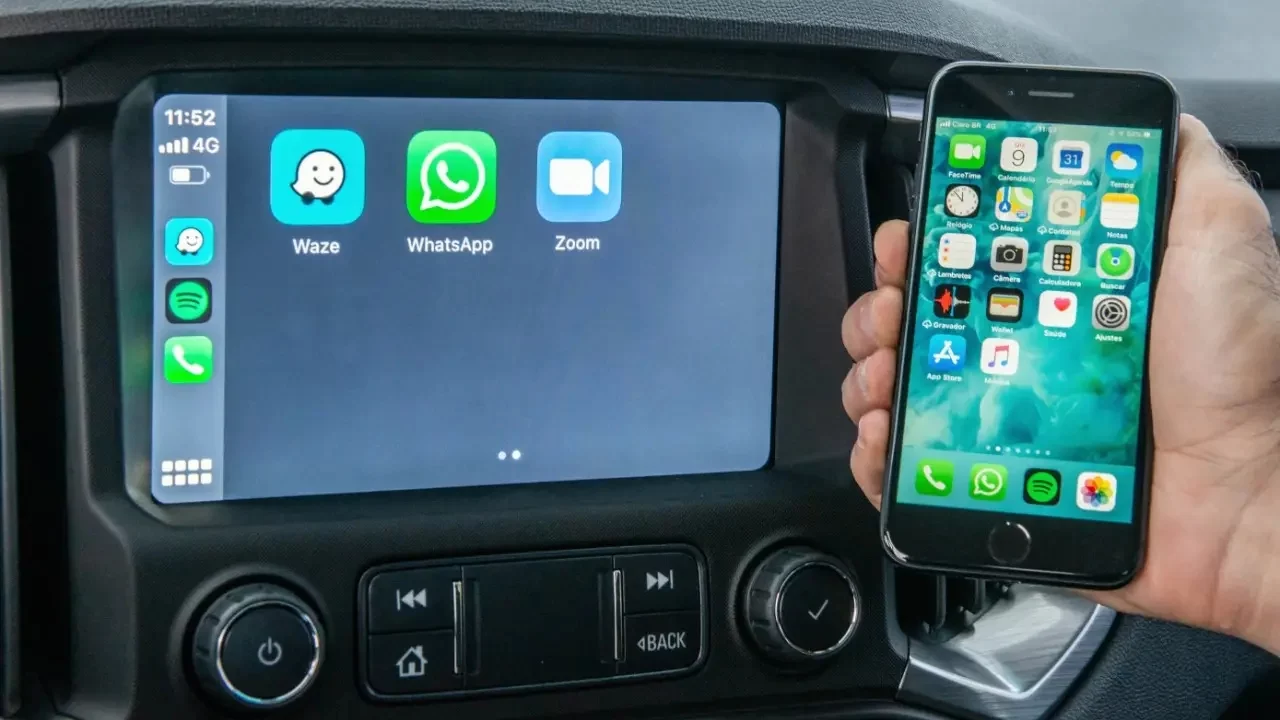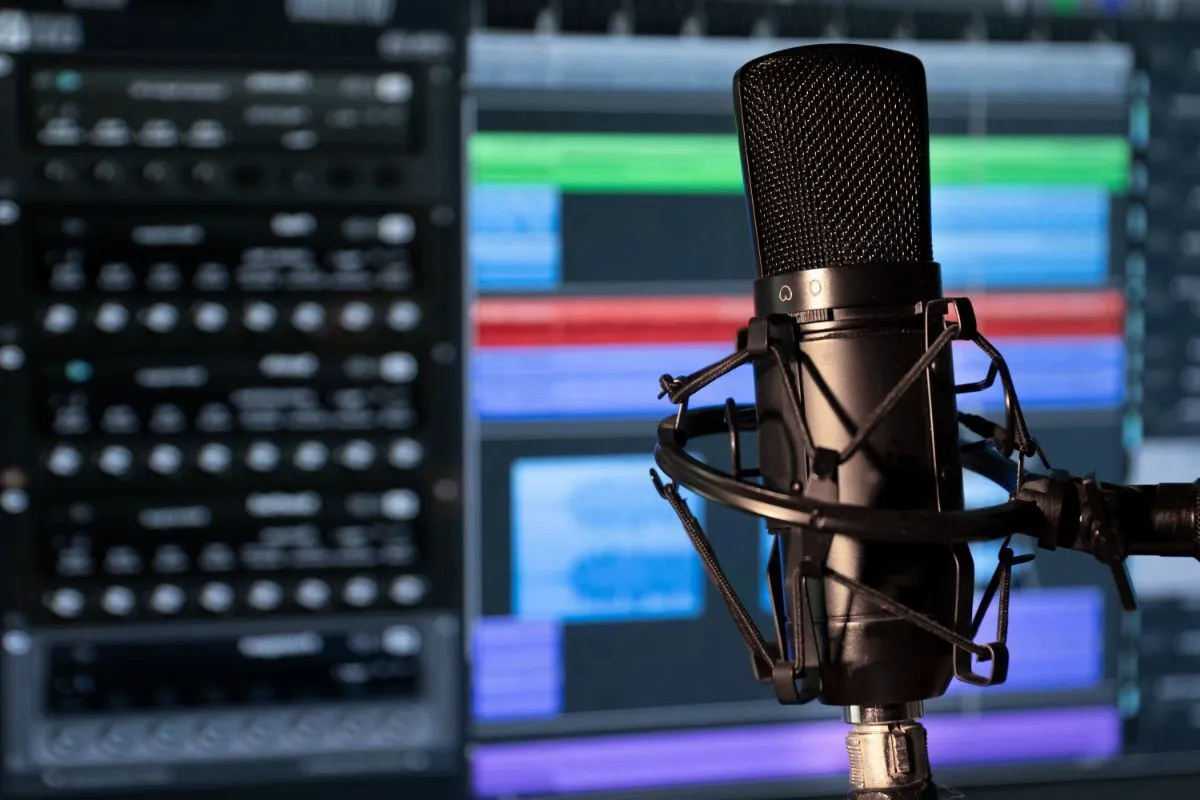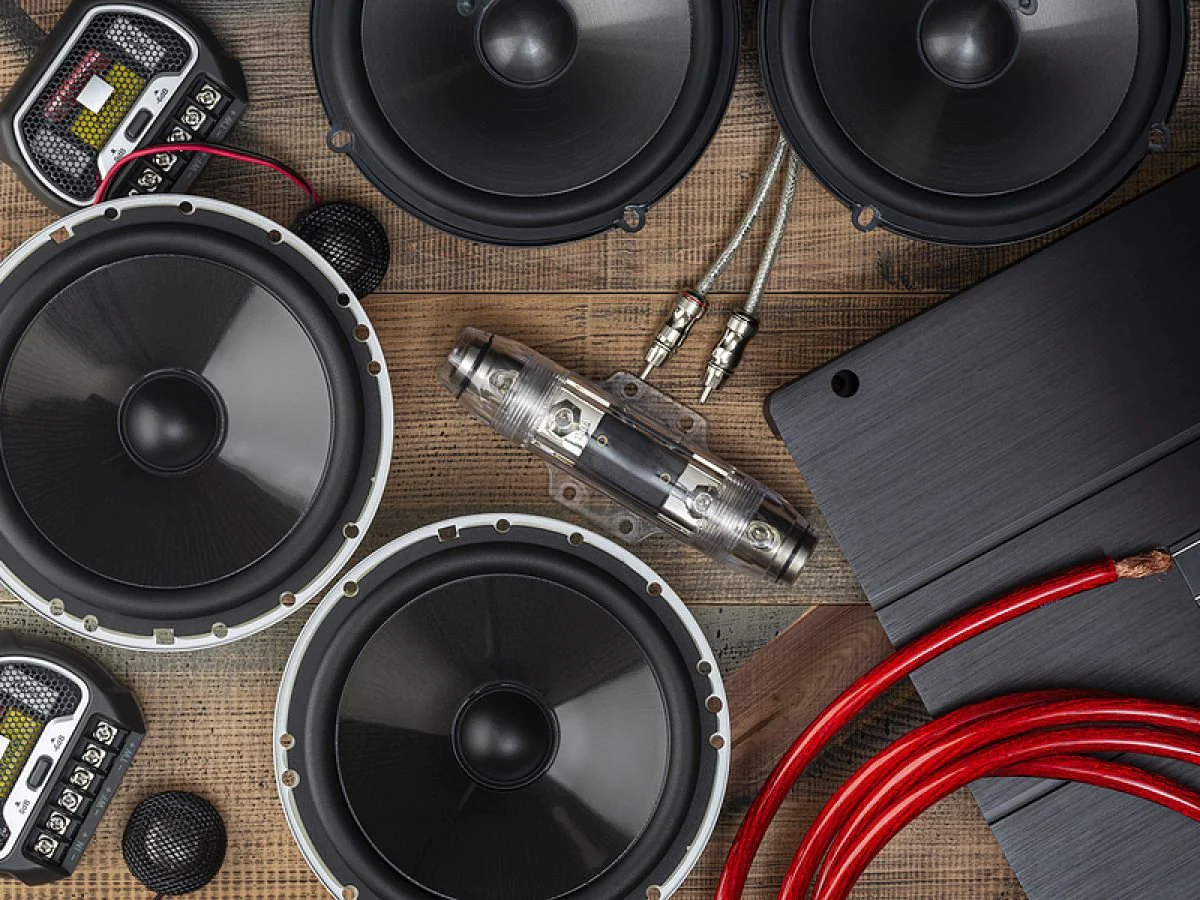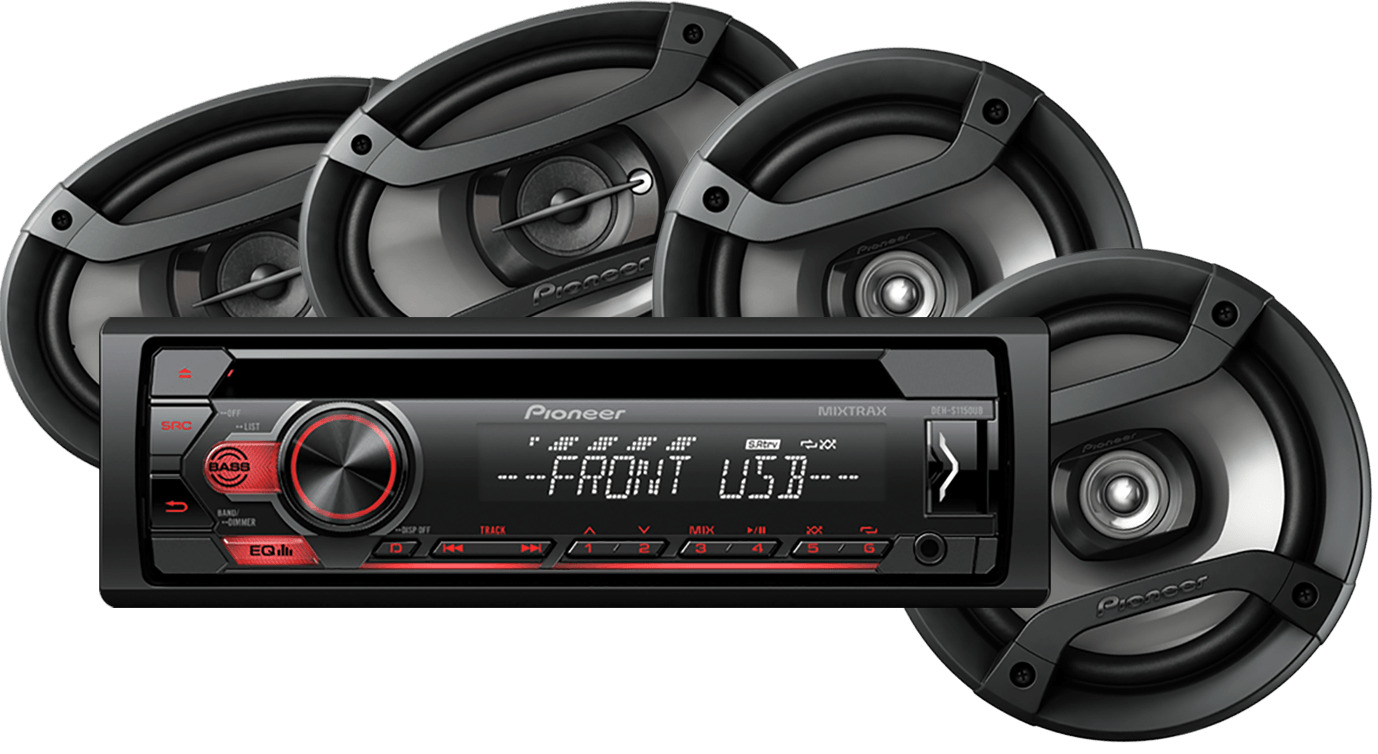Home>Devices & Equipment>Car Audio>How To Stop Clipping In Car Audio


Car Audio
How To Stop Clipping In Car Audio
Published: February 6, 2024
Learn how to prevent clipping in car audio systems. Discover effective techniques and tips to ensure clear and distortion-free sound. Get the best out of your car audio experience.
(Many of the links in this article redirect to a specific reviewed product. Your purchase of these products through affiliate links helps to generate commission for AudioLover.com, at no extra cost. Learn more)
Table of Contents
Introduction
Car audio systems have come a long way in delivering high-quality sound and an immersive audio experience while you’re on the road. However, one common issue that can hinder the enjoyment of your favorite tunes is clipping. If you’ve ever experienced distorted, harsh, or distorted sound coming from your car speakers, chances are you’ve encountered clipping.
Understanding and addressing clipping is crucial for any car audio enthusiast who wants to optimize their system’s performance. Clipping occurs when an audio signal is pushed beyond the amplifier’s capabilities, resulting in distortion and a subpar listening experience. It can be frustrating, especially when you’ve invested in high-quality speakers and components.
In this article, we’ll dive into the world of clipping in car audio and explore its causes, effects, and, most importantly, how to prevent it. Whether you’re an audiophile, a casual listener, or someone who loves to blast tunes while driving, this guide will help you deliver clean and accurate sound without the distortion caused by clipping.
Understanding Clipping
In order to address clipping effectively, it’s important to have a basic understanding of what it is and how it occurs in car audio systems. Clipping refers to the distortion that happens when an amplifier is pushed beyond its maximum capacity to amplify an audio signal.
When an amplifier starts to reach its limits, it can no longer accurately reproduce the audio waveform. Instead, it “clips” off the top and bottom portions of the waveform, resulting in a flattened and distorted sound. This distortion is most noticeable in the form of harsh, buzzy, or muddy audio.
Clipping can occur for various reasons, including improper gain settings, low-quality audio sources, and inadequate power supply. It’s important to note that clipping is not limited to high volume levels – it can occur at any volume, depending on the specific circumstances. Even a brief moment of clipping can significantly degrade the audio quality and potentially damage your speakers.
Identifying clipping can be challenging, especially when you’re dealing with subtle distortions. However, there are some telltale signs to look out for. If you notice distortion, loss of dynamics, or a lack of clarity in your audio, clipping may be the culprit. Additionally, if you hear any buzzing, crackling, or popping sounds, particularly during loud or bass-heavy passages, it’s likely due to clipping.
Causes of Clipping in Car Audio
Clipping can occur due to various factors within a car audio system. Understanding the causes can help you identify and address the issues to prevent clipping and preserve the integrity of your audio signals.
- Improper gain settings: One of the most common causes of clipping is improper gain settings on your amplifier. Gain refers to the amplification level of the audio signal. If the gain is set too high, the amplifier will reach its limits and start clipping the signal. It’s crucial to properly set the gain levels to match your speakers and audio source.
- Poor quality audio sources: Low-quality audio files or sources can contribute to clipping. Compressed audio formats, such as MP3, may already have clipped or distorted components. Additionally, audio files with low bitrates or heavily compressed formats may not reproduce well, leading to clipping when played at high volumes.
- Inadequate power supply: Insufficient power supply to the amplifier can also cause clipping. If the amplifier is not receiving enough power to handle the audio signal, it will struggle to reproduce it accurately, resulting in distortion and clipping.
- Inadequate speaker handling: Another common cause of clipping is using speakers that cannot handle the power or the frequency range of the audio signal. When speakers are pushed beyond their limits, they may distort the audio signal, leading to clipping.
- Incorrect speaker impedance: Mismatching the impedance of the speakers and amplifier can also contribute to clipping. When the impedance doesn’t match, the amplifier may struggle to handle the load properly, resulting in distorted and clipped audio.
- Faulty or damaged equipment: Lastly, faulty or damaged equipment such as amplifiers, head units, or speakers can also cause clipping. Worn-out components or electrical issues can impact the performance of the audio system, leading to distortion and clipping.
By understanding the causes of clipping, you can take proactive measures to prevent it and ensure that you enjoy clean and accurate audio in your car audio system.
Effects of Clipping on Audio Quality
Clipping in car audio systems can have significant consequences on the quality of the audio playback. Understanding these effects will help you appreciate the importance of preventing clipping and maintaining the integrity of your audio signals.
One of the most noticeable effects of clipping is the distortion of the audio. Clipped audio signals sound harsh, buzzy, and unnatural. The clipped portions of the waveform create a distorted sound that greatly reduces the clarity and fidelity of the original recording. This distortion is particularly noticeable in high-frequency and dynamic passages, where the clipped audio can sound shrill and strained.
Furthermore, clipping can impact the dynamics of the audio. Dynamics refer to the difference between the softest and loudest parts of a composition. When an audio signal is clipped, the dynamic range is compressed, resulting in a loss of nuance and subtlety. The soft passages may lack detail and presence, while the loud sections may sound compressed and flattened.
In addition to the audible effects, clipping can also have negative physical consequences, particularly for your speakers. When an audio signal is clipped, it can cause excessive heat and strain on the speaker coil. Over time, this can lead to damage and even speaker failure. This is why it’s essential to prevent clipping and protect your speakers from unnecessary stress.
Another side effect of clipping is listener fatigue. Constant exposure to distorted and clipped audio can be tiring and unpleasant. It can detract from the enjoyment of your favorite music and potentially discourage extended listening sessions. By addressing clipping, you can create a more enjoyable and immersive audio experience in your car.
Overall, the effects of clipping on audio quality are undeniable. It compromises the accuracy, fidelity, dynamics, and overall enjoyment of your music. By taking measures to prevent clipping, you can ensure that your car audio system delivers clean, powerful, and immersive sound.
How to Stop Clipping in Car Audio
Now that we understand what clipping is and its impact on audio quality, let’s explore some effective ways to prevent clipping in your car audio system. By following these steps, you can optimize your system’s performance and enjoy distortion-free sound.
- Adjusting the Gain Settings: Start by properly setting the gain levels on your amplifier. Follow the manufacturer’s recommendations and ensure that the gain is adjusted to match your speakers and audio source. Avoid setting the gain too high, as it can push the amplifier into clipping territory. Use a multimeter or an oscilloscope to help you accurately set the gain levels.
- Upgrading the Speakers: If your current speakers can’t handle the power or the frequency range of the audio signal, consider upgrading to higher-quality speakers. Look for speakers with a higher power handling capacity and a wider frequency response to ensure that they can handle the demands of your audio system without distorting the signals.
- Using a Digital Sound Processor: A digital sound processor (DSP) can help optimize the audio signal and prevent clipping. It allows you to adjust the equalization, time alignment, and other audio parameters to ensure that the signal is properly processed before reaching the amplifier. A well-tuned DSP can help maintain the integrity of the audio and prevent distortion.
- Adding an Amplifier: If your current amplifier is struggling to provide enough power to your speakers, consider adding a more powerful amplifier to your system. An amplifier with higher wattage and better performance can handle the audio signals without reaching its limits and introducing clipping.
- Upgrading the Head Unit: Sometimes, the factory-installed head unit may not provide enough power or quality signal processing, leading to clipping. Consider upgrading to a higher-quality head unit that offers better power output and advanced sound processing features. This can significantly improve the audio quality and reduce the chances of clipping.
By implementing these steps, you can effectively prevent clipping in your car audio system and enjoy distortion-free and high-quality sound. Remember to also use high-quality audio files and sources to ensure that the signal fed into your system is of the highest possible quality.
Adjusting the Gain Settings
One of the key factors that contribute to clipping in car audio systems is improper gain settings on amplifiers. Adjusting the gain levels correctly is crucial to prevent distortion and ensure that the amplifier operates within its limits.
The gain setting on an amplifier determines the amount of amplification applied to the audio signal. When set too high, the amplifier can reach its maximum capacity and start to distort the signal, leading to clipping. Conversely, setting the gain too low can result in a weak and underpowered audio output.
To properly adjust the gain settings, you first need to consult the amplifier’s manual or specifications to understand the recommended range. It’s important to note that different amplifiers may have different methods for setting the gain, such as using a DMM (digital multimeter) or an oscilloscope. Follow the manufacturer’s guidelines to ensure accurate adjustment.
You can start by setting the gain to the minimum level and gradually increasing it until you achieve the desired volume without distortion. Avoid blindly cranking up the gain to reach a desired volume level as it can easily lead to clipping. Instead, focus on finding the sweet spot where the audio output is clean, clear, and distortion-free.
Using a multimeter or oscilloscope can help you measure the output voltage of the amplifier and ensure that it aligns with the recommended range. This will give you a more precise and accurate indication of the gain level and help you avoid pushing the amplifier into clipping territory.
Additionally, it’s essential to adjust the gain settings for each channel if you have a multi-channel amplifier. Each channel may have different requirements, so take the time to fine-tune each one individually.
Regularly check and re-adjust the gain settings, especially if you make changes to your audio system or add new components. It’s also a good idea to periodically listen to your system at different volume levels to ensure that clipping is not occurring. Trust your ears and make adjustments accordingly.
By properly adjusting the gain settings on your amplifier, you can prevent clipping and achieve optimal performance from your car audio system. Take the time to follow the manufacturer’s guidelines and use measurement tools for accurate adjustments, ensuring that your music is delivered with clarity and without distortion.
Upgrading the Speakers
When it comes to preventing clipping in car audio systems, upgrading the speakers is another effective solution. Poorly matched or low-quality speakers can struggle to handle the power and frequency range of the audio signal, leading to distortion and clipping.
When considering speaker upgrades, there are a few key factors to keep in mind. Firstly, look for speakers with a higher power handling capacity. Speakers that can handle more power are less likely to distort or clip when the volume is turned up. Higher power handling allows the speaker to accurately reproduce the audio signal without strain or distortion, even at higher volume levels.
In addition to power handling, consider the frequency response of the speakers. Speakers with a wider frequency range can deliver more accurate and detailed sound reproduction. They can handle both low and high frequencies with better precision, ensuring that the audio signal is faithfully reproduced without any frequency-specific clipping.
Furthermore, pay attention to the speaker’s sensitivity rating. Sensitivity refers to the speaker’s efficiency in converting power into sound. Speakers with higher sensitivity ratings require less power to achieve the same volume level. This means that you can drive the speakers with less power and lower the chances of clipping.
It’s also important to choose speakers that are compatible with the available space in your car. Ensure that the speakers fit properly and don’t interfere with any internal components or structures. Consider the speaker’s impedance as well to ensure compatibility with your amplifier or head unit.
When upgrading speakers, it’s advisable to opt for high-quality brands known for their sound reproduction capabilities. Look for reputable manufacturers who specialize in car audio products and have a track record of producing reliable and high-performance speakers.
Proper installation is crucial when upgrading speakers. Follow the manufacturer’s instructions or seek professional help if needed. Ensure that the wiring, mounting, and placement are done correctly to maximize the speaker’s performance and prevent any potential issues that could lead to clipping.
By upgrading speakers to ones that can handle higher power, offer a wider frequency range, and have better sensitivity, you can significantly reduce the likelihood of clipping in your car audio system. Enjoy cleaner, distortion-free sound and a more immersive audio experience by investing in high-quality speakers that match the capabilities of your system.
Using a Digital Sound Processor
A digital sound processor (DSP) is a powerful tool for optimizing audio signals and preventing clipping in car audio systems. A DSP can help fine-tune the audio parameters, allowing for precise adjustments and ensuring that the audio signal is properly processed before reaching the amplifier.
One of the key advantages of using a DSP is its ability to adjust the equalization (EQ) settings. EQ allows you to control the frequencies in the audio signal, boosting or cutting specific ranges to achieve the desired sound. With a DSP, you can fine-tune the EQ settings to match your car’s acoustics and prevent any frequency-specific clipping that may occur due to room resonances or speaker limitations.
Another important feature of a DSP is time alignment. Time alignment allows you to adjust the delay in sound delivery to each speaker. By aligning the arrival time of the audio signal from each speaker, you can create a more cohesive and accurate soundstage. This can help improve the imaging and localization of the instruments and vocals, reducing the chances of clipping caused by phase cancellation or misalignment.
A DSP also provides advanced signal processing capabilities such as crossover settings, phase control, and bass management. These features ensure that the audio signal is properly divided among the speakers, preventing overlapping frequencies and optimizing the performance of each speaker in the system. By efficiently managing the audio signals, a DSP can reduce the overall workload on the amplifier and minimize the chances of clipping.
When using a DSP, it’s important to take the time to properly set up and calibrate the device. Refer to the manufacturer’s instructions and consider using audio measurement tools such as a calibrated microphone to ensure accurate adjustments. Take the room acoustics into account and listen carefully to any changes in the audio quality as you make adjustments to prevent clipping.
High-quality digital sound processors are available from various reputable manufacturers in the car audio industry. Consider factors such as the number of inputs and outputs, processing capabilities, and user-friendly interfaces when selecting a DSP that suits your needs and budget.
By incorporating a digital sound processor into your car audio system, you can fine-tune the audio parameters and prevent clipping. Achieve optimal sound quality, improved imaging, and precise control over the audio signals, ensuring a distortion-free listening experience in your car.
Adding an Amplifier
Adding an amplifier to your car audio system can be a game-changer when it comes to preventing clipping and enhancing the overall audio performance. An amplifier provides a dedicated power source for the speakers, allowing them to operate more efficiently and reducing the chances of distortion and clipping.
When selecting an amplifier, consider the power handling capabilities and match it to the power requirements of your speakers. An amplifier with higher wattage can provide ample power to the speakers, ensuring that they operate within their optimal range without strain or clipping. Look for amplifiers with a stable and clean power output to deliver the best possible audio reproduction.
Installing an amplifier allows you to control the power distribution to each speaker and tailor it to specific needs. You can adjust the gain settings, crossover frequencies, and other parameters to optimize the amplifier’s performance and prevent any issues that might lead to clipping.
By adding an amplifier, you can also alleviate the workload on your head unit, especially if it has a limited power output. This reduces the likelihood of the head unit reaching its limits and introducing clipping. The amplifier provides the necessary power boost, ensuring that the audio signal remains clean and distortion-free.
It’s important to properly install and wire the amplifier for optimal performance and safety. Ensure that you use appropriate gauge wiring and connect the amplifier to a reliable power source. Securely mount the amplifier to avoid any vibrations or interference that could potentially impact the audio quality. If you’re not confident in your abilities, it’s recommended to seek professional installation to ensure everything is done correctly.
Adding an amplifier to your car audio system can significantly improve the audio performance and prevent clipping. It provides a dedicated power source for your speakers, optimizes the power distribution, and reduces strain on the head unit. With a properly installed and calibrated amplifier, you can enjoy distortion-free, powerful, and immersive sound in your vehicle.
Upgrading the Head Unit
Upgrading the head unit of your car audio system is another effective way to prevent clipping and enhance the audio quality. The head unit serves as the control center and audio source for your system, and a higher-quality unit can provide better power output, signal processing, and connectivity options.
When choosing a new head unit, consider models with higher power output capabilities. A head unit with a higher wattage can provide more power to your speakers, reducing the chances of clipping during high-volume playback. Look for head units that offer a clean power output and good signal-to-noise ratio to ensure a high-quality audio signal.
Additionally, consider head units that offer advanced sound processing features. Look for units with built-in digital signal processors (DSP) or equalizers that allow fine-tuning of the audio parameters. These features can help optimize the audio signal, prevent frequency-specific clipping, and provide a tailored listening experience.
Another important factor to consider is the connectivity options of the head unit. Look for units that offer high-quality audio inputs such as USB, Bluetooth, or aux-in. This ensures that you can source high-resolution audio files and maintain a clean and uncompressed audio signal, reducing the chances of clipping caused by low-quality audio sources.
When installing the new head unit, ensure that it is wired correctly and securely. Use appropriate wiring harnesses and connectors to maintain compatibility with your vehicle’s wiring system. Proper installation will ensure that the new head unit operates effectively and integrates seamlessly with the rest of your car audio system.
After installing the new head unit, take the time to properly configure the audio settings. Adjust the EQ, balance, and fader settings to your preference and the acoustics of your vehicle. Keep an eye on the volume levels to avoid pushing the head unit into clipping territory, especially during high-energy or bass-heavy tracks.
By upgrading the head unit, you can improve the power output, signal processing capabilities, and connectivity options of your car audio system. This, in turn, helps prevent clipping and delivers a higher-quality audio experience in your vehicle.
Conclusion
Clipping can significantly impact the audio quality and overall enjoyment of your car audio system. Understanding the causes and effects of clipping is crucial for any car audio enthusiast who wants to optimize their system’s performance. By following the steps outlined in this article, you can effectively prevent clipping and ensure a clean and distortion-free audio experience.
Adjusting the gain settings on your amplifier is a fundamental step in preventing clipping. Taking the time to properly set the gain levels and avoid pushing the amplifier beyond its limits can go a long way in preserving the integrity of the audio signals.
Upgrading the speakers in your car audio system can also help prevent clipping. Speakers with higher power handling capacity, wider frequency response, and better sensitivity ensure that they can handle the demands of the audio without distortion or strain.
Using a digital sound processor (DSP) allows for precise adjustments of the audio parameters such as EQ, time alignment, and crossover settings. Fine-tuning the audio signals can help optimize the performance, improve imaging, and prevent clipping caused by frequency overlaps or phase issues.
Adding an amplifier to your system provides dedicated power to the speakers and reduces the workload on the head unit. A properly installed and calibrated amplifier ensures that the audio signals remain clean and distortion-free, even at higher volume levels.
Lastly, upgrading the head unit can enhance the power output capabilities, signal processing, and connectivity options of your car audio system. A higher-quality head unit can help prevent clipping and deliver a superior audio experience.
In conclusion, by implementing these steps – adjusting gain settings, upgrading speakers, using a digital sound processor, adding an amplifier, and upgrading the head unit – you can effectively prevent clipping in your car audio system. Enjoy distortion-free, powerful, and immersive sound as you cruise down the road. Remember to regularly check and fine-tune your system to maintain its optimal performance and audio quality.

